

John HILLS takes us through the story of the layout.
Guterbahnhof Frankenland is an HOe Scale German layout built by John Hills of Minitrains.
The story and history of where and why the tracks were laid...
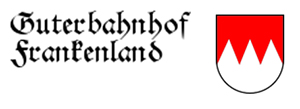
Over several years, each of the layouts which I have made is loosely based upon a story – a reason for the railway to exist within the landscape.
The stimulus for each new project is usually the discovery of a new lineside scenic kit on the shelves of the local model shop or at an exhibition, or the delight of stumbling across some long forgotten gem stored away in one of those "that will come in handy one day" collection of boxes stacked in the garage.
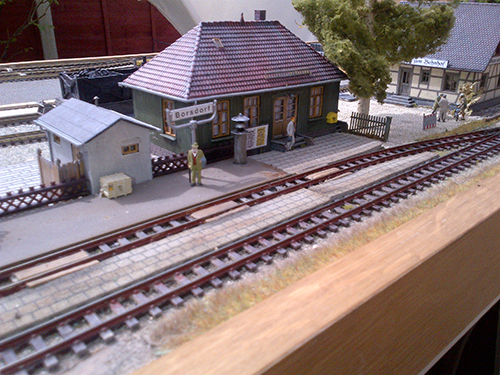
Here's the story behind my latest construction...
The railway era in Germany began in 1835 with the first railway running between the cities of Nürnberg and Furth in today's State of Bavaria – one of the independent "Lánder" states which came together in 1871 as the modern country of Germany.
Gradually, each of these independent states began laying tracks, some of which were "standard gauge" and others for geographic or economic reasons were "narrow gauge".
The independence of each railway system in neighbouring states was jealously guarded by the various administrations of royalty, dukes, and barons - meaning that often goods had to be manually transferred from one company's wagons to another at goods interchange yards.
In the Eastern area of Germany, the bordering states of Franconia (absorbed into Bavaria in the early 1800s), Thuringia, and Saxony each had their own network of tracks, with Saxony having the largest share of narrow gauge tracks. By the early 1900s, the administrations of Saxony and Bavaria had already combined resources to construct a standard gauge line in the area around "Hof".
Thanks to forestry and other industries in the area where the three states adjoined each other, narrow gauge lines had been laid, resulting in a necessity to have goods interchange yards.
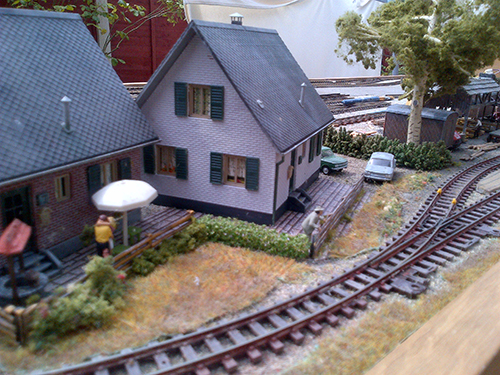
In our little village, "Borsdorf", located within Franconia - but within a stone's throw of the borders between each of these three states - narrow gauge goods transfer between Thuringia and Saxony had become standard practice, and the State of Bavaria had taken advantage of the existing facilities by linking the goods transfer station with a standard gauge line from the branch line to "Hof", whose main station was on the main line to Leipzig and Berlin. Some bright individual within that administration had made the decision to make this "Borsdorf" section of the line dual gauge to cope with standard gauge goods traffic.
Flourishing rail traffic before the Second World War saw the foundation of a joint venture - the goods interchange becoming known as "Guterbahnhof Frankenland".
Sadly, fortunes and events changed over time, and following the end of WW2 in 1945, the states of Thuringia and Saxony found themselves under Russian control, whilst Bavaria was within the occupation zone of the American forces.
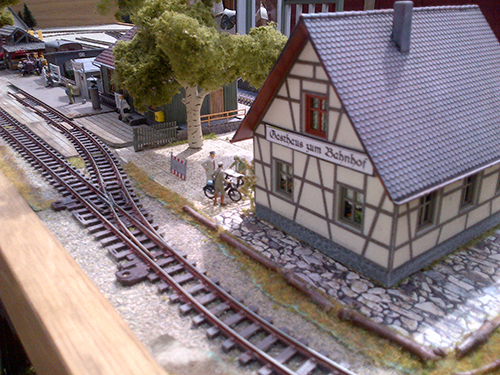
In 1949, the state border, which was later to become known later in the 1960s as "The Iron Curtain", split Germany into two countries - West Germany and East Germany. Bavaria belonged to the West with the inhabitants of Saxony and Thuringia now finding themselves in East Germany. The standard gauge tracks which had linked Hof which now lay in West Germany were ripped up to reinforce the border between the now different countries.
However, our little goods interchange yard continued to provide goods transit on the existing narrow gauge tracks, with the occasional "big train" goods trucks from Hof to terminate here for onwards transport by road.
"Borsdorf" village is captured in miniature at the time of the early 1960s – the military guarded fencing of the border separating the two Germanys is just over the hill. The short tunnel, which once covered the standard gauge track has been boarded up. Although declining, narrow gauge passenger traffic still trundles through the tiny station whilst some freight continues to be handled, primarily for the timber trade and a couple of local factories. The dual gauge track has been removed just after the tunnel which linked West with East, so the standard gauge tracks now terminate here, with trucks being transhipped to road trailers.
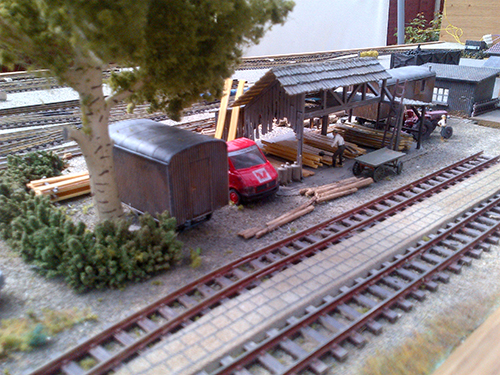
The tiny steam engines and diesels from the Minitrains range are housed in the Borsdorf loco shed, with all the necessary facilities to feed and water them. The locos and rolling stock are not natives of the original Franconian lines, but purchased from other narrow gauge companies as they ceased operations. This gives me the "poetic licence" to run models that are in my current collection.
We haven't yet reached the decline of the 1970s when local pressure groups fought to keep their local lines open as tourist attractions – although it would only take the addition of a few more Preiser figures with cameras together with a modern car park made to accommodate those still interested in steam trains, but that's another story...
Guterbahnhof Frankenland is being exhibited at the Gaugemaster Model Railway Open Weekend on the 1st and 2nd September 2018, one of nearly 20 layouts on show in many different scales, depicting railways from around the world. Entry is free, with free parking.
If you couldn't join us this time why not try to join us at one (or more) of our upcoming events here at Gaugemaster HQ.